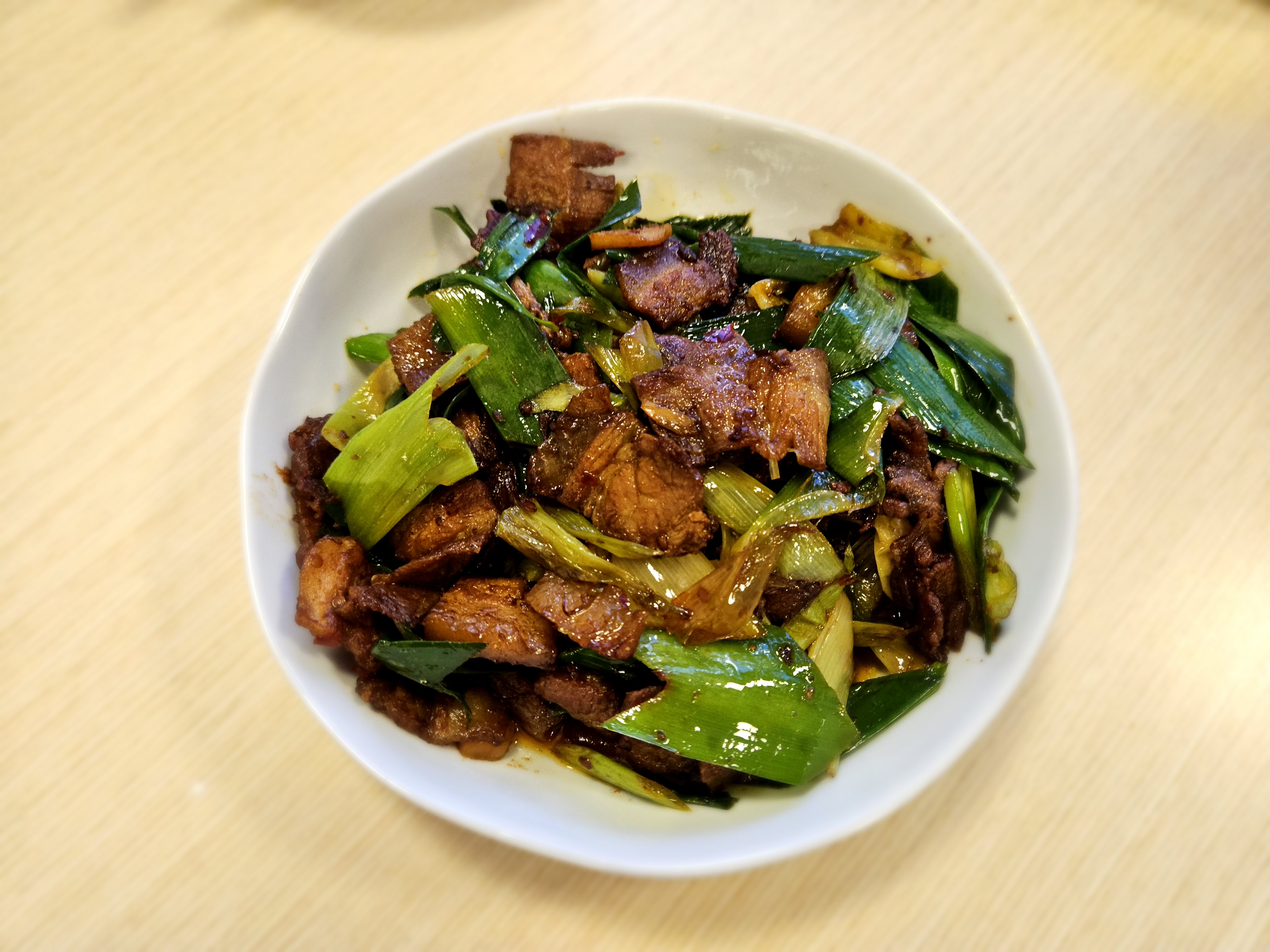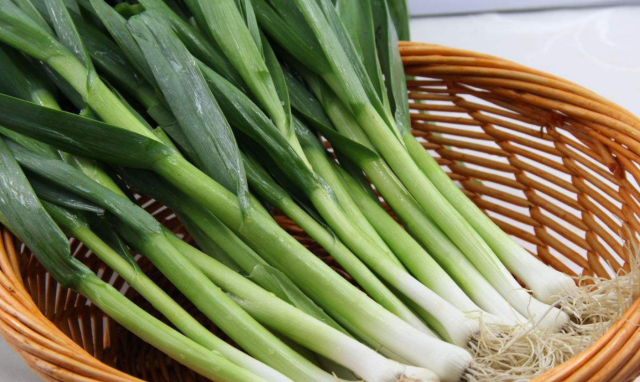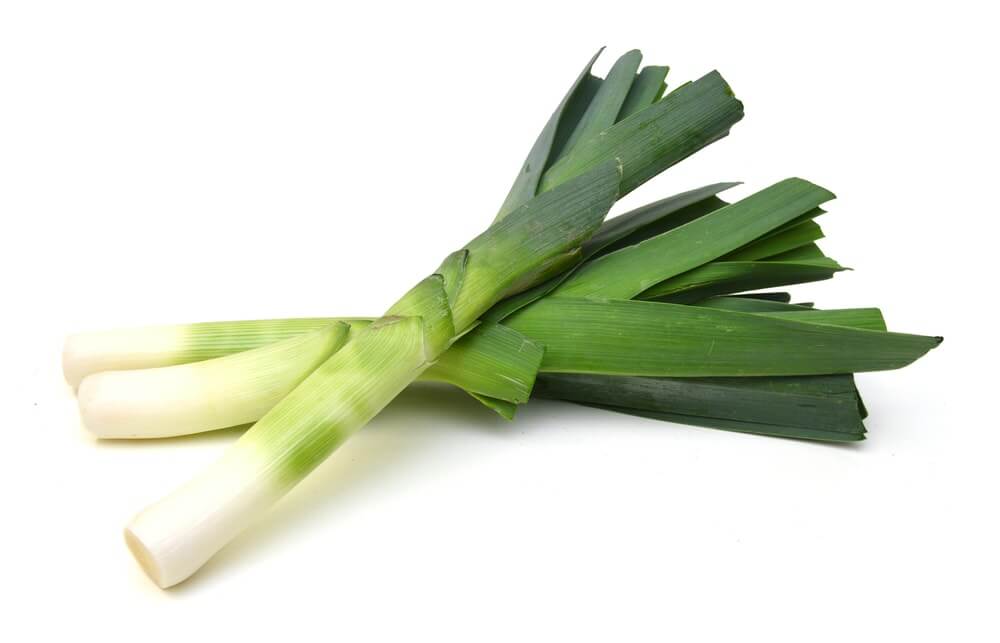回锅肉 (Twice Cooked Pork)
Turns out 蒜苗 isn’t the same as leeks!

Ingredients
- Aromatics
- Ginger
- 蒜苗 (“garlic sprouts”); these are NOT leeks. See the notes below.
- Garlic (optional)
- Sauces
- 辣豆瓣酱 (spicy bean curd-based sauce) (not optional at all)
- 甜面酱 (also not optional at all)
- 豆豉 (fermented black beans)
- Soy sauce
- Pork belly or pork shoulder (I believe pork shoulder, or the Boston butt cut, is technically the more authentic version cut. More on this below)
- Salt/MSG/Sugar to taste
- 泡椒 (just one, maybe two/three depending on how spicy you want it)
Sauce Ratio: the 辣豆瓣酱 : 甜面酱 : soy sauce ratio is roughly 1.75:1:0.75. You can tweak this depending on how spicy/sweet you want it. The numbers look very specific, but I’m more just saying that I think there should be around 1.5x to 2x as much 豆瓣酱 as 甜面酱, and a little less soy sauce than 甜面酱. The exact ratio doesn’t matter too much though and can be tweaked to preference.
Cooking:
This dish is called twice cooked pork because there are two steps in the cooking process.
First Step: blanch your pork. Put the pork in a pot of cold water with some ginger slices, sichuan peppercorn, and shaoxing cooking wine. Heat it up gradually until simmering, and simmer for around 25 minutes. You should boil it until you can stick the lean part with a chopstick and it passes through without too much resistance.
Near the beginning, you will see some scum rise to the surface. You should scoop that off. If you don’t scoop it off early, it will redissolve back into the water. For more details on braising, see the technical note on blanching/braising (which is possibly not posted yet).
Towards the end, the steam from the simmer should smell very fragrant and clean, and not at all meaty.
Second Step: After blanching and rinsing your pork (optionally soak it in cold water for a bit to “shrink” the meat), slice it into thin slices (1-2mm). Try to make it so that each slice has some fatty and lean part. Slice ginger into slices, and slice 蒜苗 into small lengths. If you want to add a little bit of crushed garlic, prepare that now.
Heat your wok to low/medium heat (not too hot). Add neutral oil and add in the pork slices. Fry on low/medium heat for a while to brown the meat and to render out the oil. This means that we are melting the fat from the meat; this will help incorporate all the flavors more (you will fry the sauce and the aromatics in the pork lard, and also if you don’t melt the oil you will just be eating pieces of unrendered fat). Do not use high heat during this step. Otherwise, the pork belly will start to burn and the oil will smoke before the fat has time to render, both of which impart bitter flavors to the dish.
After this, you will see a lot of oil rendered out. You can keep the oil in the wok but if you feel it’s too much, you can scoop out some of this pork oil in this step.
After fried enough, add in the 豆瓣酱 and 豆豉. Fry those (still at medium heat) to make them fragrant, and also to render out the red oil from the 豆瓣酱. A really nice red oil will emerge, which is what you see in this dish at restaurants. If you’re using low/medium heat, nothing should smell or feel burned.
Once the sauce is fried enough and aromatic, add in the ginger and 泡椒 (and garlic). After a bit, add in the 甜面酱 and soy sauce (mix them together first). Then add in a dash of black vinegar (the point of this is just to add some acid to cut through all the fat). Lastly, add in the 蒜苗. Stir fry for a bit to wilt the leaves and add salt/MSG/sugar to taste.
Cooking Notes:
The translation of 蒜苗 is roughly “garlic sprout.” In particular, it is NOT a leek. Supermarkets often label leek as 大蒜苗 so it is kind of confusing which is which.
蒜苗 is from the garlic family, while 大蒜苗 (leek) is from the onion family, so they have distinctively different tastes. Some people do use leeks in this dish which I think also tastes good, but it’s not the original intended flavor.

